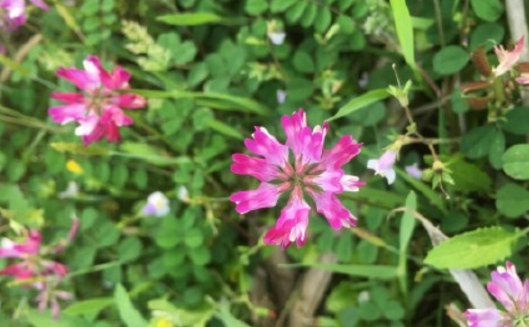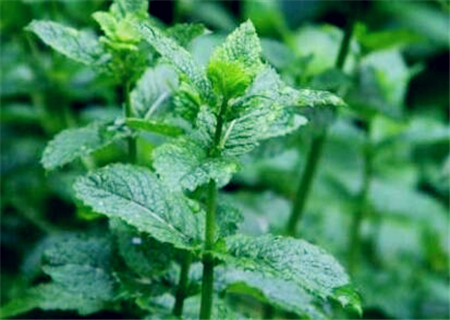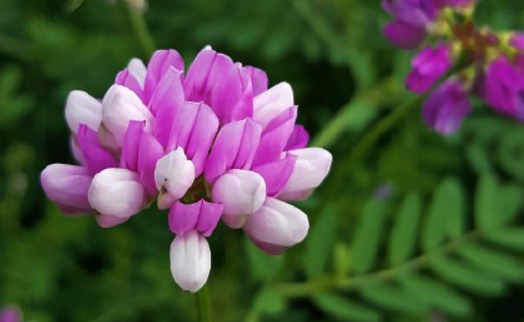Is Ziyunying of Rosa suborder poisonous? Breeding methods and matters needing attention? What's the difference with alfalfa?
Artemisia mandshurica is an herbaceous plant with pinnately compound leaves that will blossom, so is it poisonous? Breeding methods and matters needing attention? What's the difference with alfalfa? According to the data, Ziyunying prefers a warm and humid growth environment, can be cold-resistant, and requires sufficient water when breeding. In the choice of soil, generally choose sandy soil or clayey soil, to good drainage, its requirements on the soil is not strict.

Is Ziyunying poisonous?
Artemisia mandshurica is divided into non-toxic and toxic, non-toxic Radix Astragali can be cooked and eaten, stir-fried or made soup; poisonous Artemisia mandshurica can lead to all kinds of livestock poisoning, especially horses. Generally speaking, local livestock have the ability to distinguish, but they may eat if they are too hungry. If a large number of food will lead to acute poisoning, if a small amount of long-term consumption will lead to chronic poisoning.
Symptoms of Ziyunying poisoning
Acute poisoning can die in a few days and chronic poisoning in a few months. Poisoned animals will be lethargic, have no appetite and are weak until they are paralyzed and unable to stand, or run frantically until they are paralyzed, and eventually die. For the cattle poisoned by Ziyunying, they will show mania and restlessness, and the cows will have a miscarriage. For sheep, the teeth are black and loose. In addition, if livestock eat moldy whole grass, they will develop "warping disease", which is characterized by hemorrhagic anemia and often dies.
Second, breeding methods and matters needing attention?
Timely fertilization
The fertilization of Ziyunying is mainly phosphate fertilizer and potassium fertilizer, and nitrogen fertilizer can be added properly. Different fertilizers were applied in different periods, generally, calcium phosphate and manure were applied in late autumn to promote early root nodules and early seedlings; potash or plant ash were applied before and after the Winter Solstice to enhance cold tolerance; urea was applied after the Beginning of Spring to promote branch and leaf growth.
Press green at the right time
Ziyunying is usually pressed green more than ten days from the flowering period to the transplanting period, and for large-scale breeding, an appropriate amount of lime is evenly applied per mu to promote plant decay to neutralize acidity.
Timely watering
Ziyunying likes a warm and humid environment, especially in the growing period, but we should also pay attention to avoid stagnant water, so it is very important to control the amount of water, and we also need to spray water frequently to keep the environment moist.
Note:
Sow seeds in a timely and appropriate amount
According to the cool nature of Ziyunying, it can be sown more than 20 days after the harvest of late autumn rice. When sowing, it is necessary to pay attention to the soaking, drying and germination of the seeds, so as to improve the germination rate.
Mixed with rhizobium
Mix the rhizobium when the seeds are budding and whitening, that is, mix the seeds with cold porridge soup and then mix the seeds.
Strengthen maintenance and management
For large-scale economic farming of Artemisia mandshurica, ditches should be opened after the late rice harvest, including Huantian ditch, chamber ditch and cross drainage ditch to keep the soil moist and avoid stagnant water. In addition, we should also pay attention to the prevention and control of diseases and insect pests, using carbendazim or carbendazim for powdery mildew, dimethoate for aphids and trichlorfon or rice vinegar and saccharin for armyworm. In addition, attention should be paid to avoid livestock harm.
Third, what is the difference with alfalfa?
1. The life span of Artemisia mandshurica is different from that of alfalfa.
The life span of alfalfa is very long, usually about 5-7 years, and even up to 25 years. Artemisia mandshurica is a secondary plant, which blossoms from February to June and bears fruit from March to July.
2. The petals and leaves of Artemisia mandshurica are different from those of alfalfa.
The petals of Ziyunying are umbrella-shaped, the number of leaves is odd, and the Corolla is purplish red or orange. The Corolla of alfalfa is a purple butterfly-shaped Corolla, the top leaves are serrated, and each inflorescence has more than 15-30 florets.
3. The flower stem of Artemisia mandshurica is different from that of alfalfa.
The flower stem of Ziyunying is cylindrical and hollow, with hairs and more juice in the stem. The flower stem of alfalfa is erect, round or angular, mostly from the root, 1-1.5 meters high, with many branches on the stem.
4. The growth habits of Artemisia mandshurica and Medicago sativa are different.
Ziyunying likes warm and humid conditions and has strict requirements for moisture, but it has lax requirements on soil, poor salt tolerance and high hybridization rate. Alfalfa likes semi-humid and semi-arid climate, can endure drought, strong cold resistance, and can withstand severe cold of minus 30-40 ℃.
Time: 2019-03-16 Click:
- Prev

How to grow peppermint in common use? When will it be ready to plant? What are the planting methods?
Peppermint is one of the commonly used traditional Chinese medicines in China. The local name is Yindancao. It is a cool antipyretic for sweating, treating influenza, headache, red eyes, body heat, throat, gums and other diseases. So how do you grow mint? When will it be ready to plant? What are the planting methods?
- Next

How to sow the seeds of Ziyunying of goat beans? When will it blossom? What are the effects and effects?
Ziyunying, also known as warping, safflower, grass, Ziyun Yingzi, Tribulus terrestris, etc., then how to sow the seeds of Ziyunying? When will it blossom? What are the effects and effects? According to the data, it is necessary to choose a sunny noon before sowing.
Related
- Fuxing push coffee new agricultural production and marketing class: lack of small-scale processing plants
- Jujube rice field leisure farm deep ploughing Yilan for five years to create a space for organic food and play
- Nongyu Farm-A trial of organic papaya for brave women with advanced technology
- Four points for attention in the prevention and control of diseases and insect pests of edible fungi
- How to add nutrient solution to Edible Fungi
- Is there any good way to control edible fungus mites?
- Open Inoculation Technology of Edible Fungi
- Is there any clever way to use fertilizer for edible fungus in winter?
- What agents are used to kill the pathogens of edible fungi in the mushroom shed?
- Rapid drying of Edible Fungi

